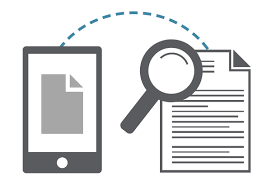Artificial Intelligence (AI) has come a long way from merely processing data inputs to understanding natural language. Language processing is at the core of a wide range of applications – from chatbots to document recognitions – and AI-powered models are powering them all. However, despite the ubiquitous nature of AI language processing, few people understand exactly how AI reads text. In this article, we demystify how AI reads text and provide a comprehensive guide to the future of language processing.
Blog Body: Unlike traditional programming that works on rules, AI language processing uses statistical modelling that allows the machine to learn on its own. The learning process begins with data aggregation, which is followed by feature selection and algorithm creation. AI models are fed a vast amount of data and through machine learning, they then learn to understand text much like humans. As for the feature selection and algorithm creation process, this involves transforming the raw data into a structured format, after which algorithms can analyze and cope with it.
Textual data can be analyzed through a wide range of deep learning techniques that work like a human brain. These techniques range from simple abstraction, meaning extracting specific keywords, to complex ones like machine comprehension, which involves understanding the text in its entirety. One approach to this is the attention mechanism that mimics the human brain to determine which parts of the text are important. This approach enables the AI model to read the text as humans do – by identifying keywords and assigning context, situation, and emotions.
Another key aspect of AI language processing is language generation – which involves creating text responses. Language generation interfaces work in real-time and creates responses based on the input text the user provides. Modern language generation models use neural networks to create plausible, fluent, and coherent text based on a specific style or topic. Owing to the transfer learning concept, AI-powered language models can build on pre-existing models, making communication much more fluent and natural.
However, despite the significant strides in AI language processing, there remain some limitations. For instance, dealing with ambiguity, subtlety, and complexity presents challenges for AI-powered models. Reading between the lines, inference, and cultural context present challenges for AI to imitate or adapt to human-like responses. Furthermore, working with multiple languages can be challenging for models as the complexities of multilingualism make it difficult for neural networks to cope simultaneously.
In short:
AI language processing is one of the most exciting AI-powered applications in the world today – and it is quickly becoming more advanced, thanks to deep learning and machine learning. The ubiquity of AI language processing has undoubtedly brought unprecedented convenience to our lives – chatbots, and language translators – all rely on ai to read texts (ia para leer textos) processing. However, as this post has shown, AI language processing isn’t perfect yet. We hope that as AI continues to evolve, it can begin to conquer these limitations to provide more natural language processing. The future of AI language processing is limitless – and we’re excited to watch how it continues to unfold.


